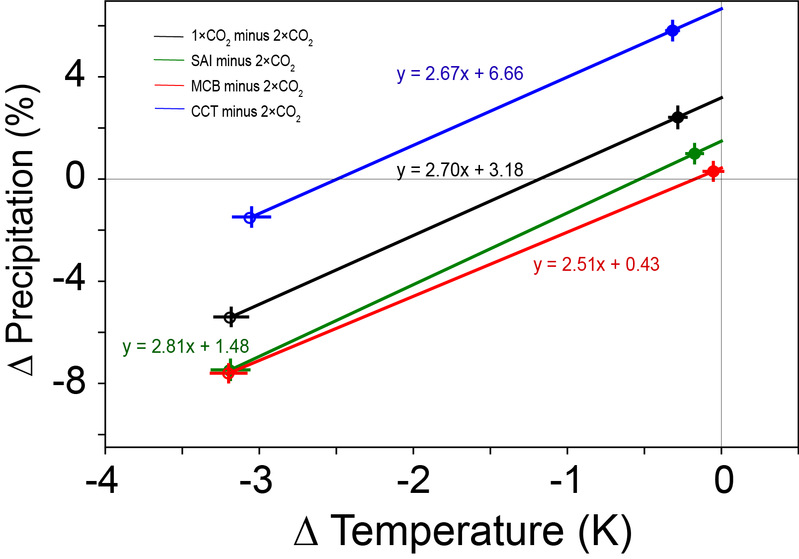Editor: 邵丹蕾 Author: Duan et al. Time: 2018-11-18 Number of visits :295
To counteract the CO2-induced global warming effect, a number of geoengineering methods have been proposed. One proposed method (sulfate aerosol injection) is to inject sulfate aerosols or its precursors (SO2) into the stratosphere to deflect more sunlight back to space. Another method (marine cloud brightening) is to seed low-level marine stratocumulus clouds to reflect more sunlight. A third method, the intentional reduction of the coverage and optical thickness of high-level cirrus cloud (cirrus cloud thinning), could potentially reduce global warming by modifying the longwave radiative effect of cirrus clouds.
The study of Duan et al. (2018) compares the climate response to these three geoengineering schemes that are designed to offset global mean surface warming caused by an abrupt doubling of atmospheric CO2. The simulations show that to offset the same amount of CO2-induced global mean warming, different amounts of radiative forcing are needed, implying that the efficacy of climate forcing is different for different geoengineering schemes. Also, for the same amount of cooling achieved, cirrus cloud thinning produces a much smaller reduction in precipitation than does stratospheric aerosol injection or marine cloud brightening. Due to the different natures of imposed forcing, these different geoengineering schemes also produce different land-sea temperature contrasts.

Figure 1: Model simulated changes in global mean precipitation against changes in global mean surface temperature (relative to 2 × CO2) from slab-ocean simulations (circles on the left) and prescribed sea surface temperature (SST) simulations (circles on the right). The horizontal and vertical bars on each point denote the uncertainty in temperature and precipitation represented by one standard error. The slopes of solid lines connecting points of slab ocean results with corresponding prescribed-SST results represent the hydrological sensitivity for each forcing agent. SAI: stratospheric aerosol increase; MCB: marine cloud brightening, CCT: cirrus cloud thinning.
This study is led by Duan Lei, a Ph.D. student in Prof. Cao Long’s group, with the collaboration of Prof. Govindasamy Bala from the Indian Institute of Science and Dr. Ken Caldeira from the Department of Global Ecology, Carnegie Institution.
Reference:
Duan, L., Cao, L., Bala, G., & Caldeira, K. (2018). Comparison of the fast and slow
climate response to three radiation management geoengineering schemes.
Journal of Geophysical Research:Atmospheres, 123. https://doi.org/10.1029/2018JD029034
